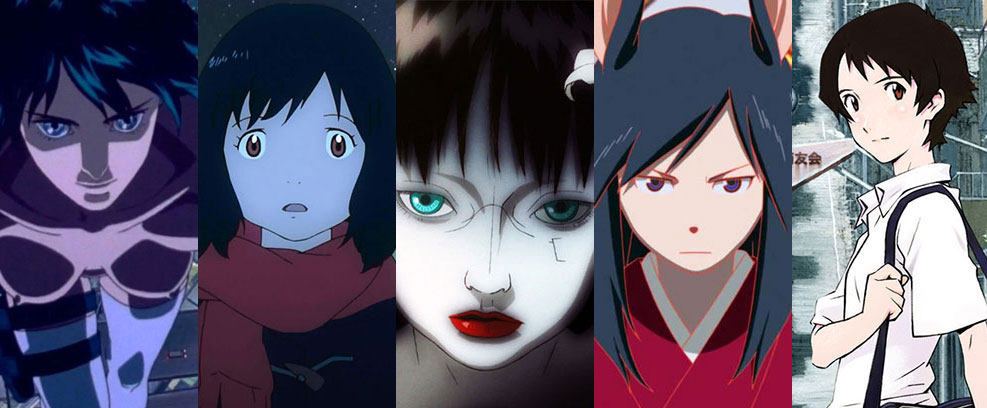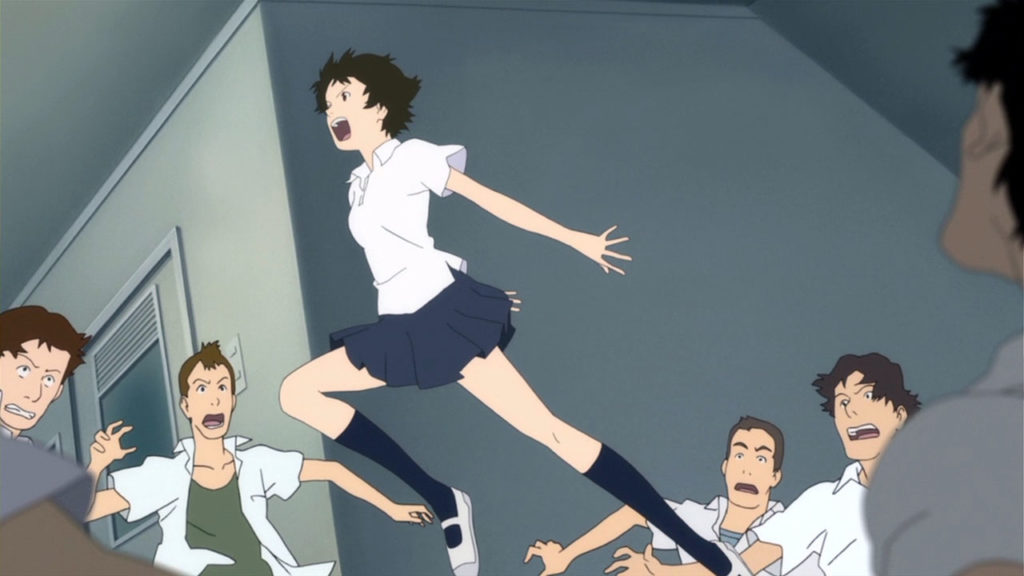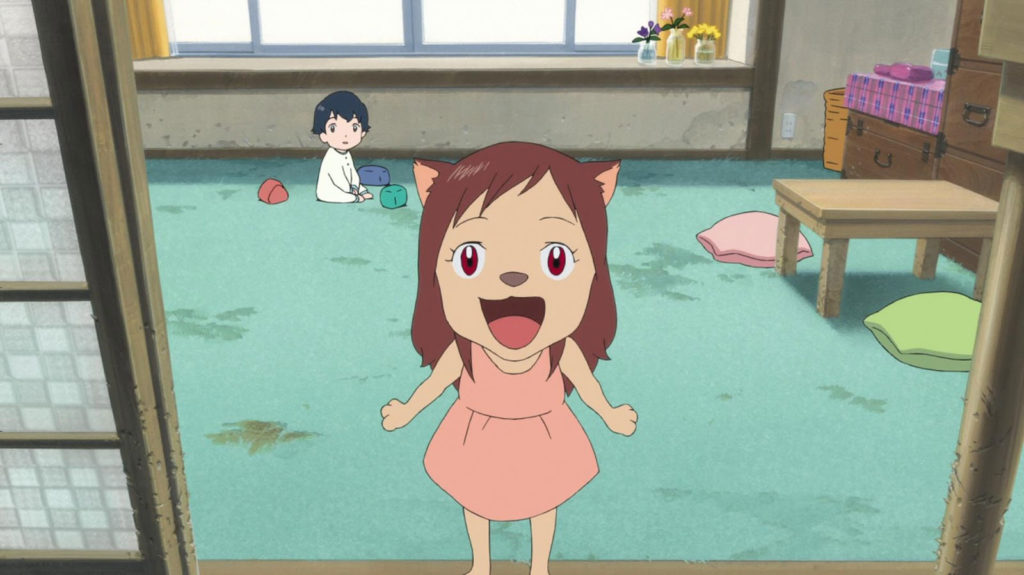
Note: this feature presents Japanese names in the traditional fashion of family name first, followed by given name.
One sparkling ray of light in this dismal year has been BFI Player’s Japan 2020 season. Originally intended for the big screens of BFI Southbank, everything inevitably shifted onto Player when COVID-19 struck.
Click here for our coverage of collections already available:
Kurosawa Akira Collection
Alexander Jacoby discusses the cinema of Ozu Yasujiro
The Classics Collection
The Vengeance Cinema of Kaji Meiko
Joining Japan 2020 from Friday 31st July is the Anime Collection. With five titles the collection may be small, but it’s perfectly formed for those with a craving for great animation.
CLICK HERE TO SEE WHAT FILMS ARE PLAYING IN BFI PLAYER’S JAPAN 2020 SEASON
SHELL PRAISER
Essential for anyone interested in action cinema with brains and imagination are Oshii Mamoru’s sci-fi classics Ghost in the Shell and sequel Ghost in the Shell 2: Innocence are . Hugely influential, the Wachowskis used 1995’s Ghost in the Shell to give Hollywood moneymen an idea of what to expect from The Matrix.
25 years on it still electrifies the senses (and that unloved 2017 remake is also worth watching).
2004’s Innocence sees Oshii blending traditional cell animation with CGI, creating astonishing sci-fi landscapes, brimming with unforgettable visuals and moments. Oshii’s vision for his much-anticipated follow-up was so grand, studio Production I.G. had to partner with Studio Ghibli to cover the whopping ¥2bn price tag.
The cash is all on screen, with one city parade set-piece taking a year to complete. The first anime Palme D’or nominated at Cannes, Ghost in the Shell 2: Innocence stands as Oshii Mamoru’s last great movie to date.
Hosoda’s Great Adventures
But, we’re going to focus on another Mamoru here: Hosoda Mamoru. If you like anime such as Your Name, Spirited Away and Mary and the Witch’s Flower, but have yet to check out Hosoda’s films, a feast awaits.
Three of his movies appear in the anime collection: 2006’s The Girl Who Leapt Through Time, 2009’s Summer Wars and 2012’s Wolf Children.
All are delightful examples of why Japanese animation is such a global powerhouse. Wolf Children also stands as a strong contender for the best Studio Ghibli film Ghibli never made.
After scoring a box office hit with 2000’s Digimon: The Movie, Hosoda was actually hired by Ghibli to direct their 2004 gem Howl’s Moving Castle. But, he left the project when creative differences proved insurmountable.
Hosoda’s chief grievance was, rather than allowing him creative freedom, Ghibli wanted a film in the style of their famous co-founder, Spirited Away director Miyazaki Hayao. Miyazaki ultimately took over directing duties on the film, to huge box office success and an Oscar nomination for Best Animated Feature…

Easy to see why Studio Ghibli courted Hosoda. Among his favourite themes and motifs are children learning responsibility as they prepare to enter adulthood, the importance of tradition and family in modern Japan and the joys of nature. All of which feature can be found in Studio Ghibli movies, including Spirited Away, Kiki’s Delivery Service, Only Yesterday and Whisper of the Heart.
Ironically, seeing Miyazaki’s thrilling 1979 adventure The Castle of Cagliostro as a teenager is what inspired Hosoda to become an animator. After quitting Howl’s Moving Castle he set up shop at the Madhouse studio.
Established in 1972, Madhouse has produced some of anime’s most famous TV series and movies. Highlights include the Beyblade and Death Note series, and amongst their cinematic output are the films of the late, great Satoshi Kon, including classics Perfect Blue and Paprika.
Hosoda’s first production at Madhouse was The Girl Who Leapt Through Time. A kind of sequel to/adaptation of Tsutsui Yasutaka’s 1967 novel, the film plays as a teenage version of Groundhog Day, with high school student Makoto discovering she can jump back in time.
Following a dramatic near-death experience, Makoto uses her power for trivial means; enjoying a pudding her sister pinched and avoiding awkward conversations with a would-be suitor. But, her frivolity is causing unexpected trouble.
The Girl Who Leapt Through Time eschews Ghibli’s typically fantastical approach, introducing science fiction elements into its time-hopping story. Summer Wars journeys even further into sci-fi territory, in a bold, unusual fashion.
On the surface, Summer Wars is a teen romance. The story centres on shy maths genius Kenji, forced into pretending to be the boyfriend of schoolmate Natsuki while visiting her family’s estate to celebrate her grandmother’s 90th birthday.
Kenji accidentally hacks into OZ, a powerful social networking platform that doubles as a technological infrastructure for the country’s key utilities (water works, traffic systems, defence…). A gap in the firewall allows A.I. demon, Love Machine, to slip through and hold the nation to ransom.
The plot ambitiously straddles this virtual but real threat, and gentler interludes as Kenji comes to realise the pleasures of rural living. Particularly in an age increasingly deafened by digital noise. Lessons about tradition and familial responsibility are delivered with a light touch, enriching characters and plot rather than landing as heavy-handed sermonising. Not for nothing has this film been compared favourably to the work of Japanese master Ozu Yasujiro.
For those new to anime, Summer Wars is probably worth watching after The Girl Who Leapt Through Time and Wolf Children. While impressive, the multiple characters and plot threads Hosoda crams into the two-hour runtime risk overwhelming viewers unfamiliar with how expansive anime ideas can be.
Watching The Girl… and Summer Wars, you form a sense of why Hosoda clashed with Studio Ghibli. While his films extol the virtues of family life and nature, they have a restless energy not typical to The House of Totoro. Ghibli’s 2014 movie When Marnie Was There is perhaps the closest comparison.
His films also look more modern in character design, famed Neon Genesis Evangelion designer Sadamoto Yashiyuki providing the concepts.

With Wolf Children, Japan 2020’s Anime Collection features Hosoda’s best movie to date. This 2012 tale of a woman forced to raise her half-human-half-wolf children alone after a tragic event is a gentle treasure far more in the Ghibli mould. Hosoda established his own studio, Studio Chizu, for this movie and has made films through Chizu since.
The director eschews sci-fi trappings for a fantasy tale about Hana, a shy university student who falls for a charismatic loner with a touch of lycanthropy to him. Taking the metaphor of children behaving like wild animals literally, the film unfolds as Hana makes her eventful journey through motherhood.
As she retreats to a remote mountain village community to avoid prying eyes, Wolf Children develops into a story about life taking you in unforeseen directions, the joys and hardships of parenthood and the power of community spirit.
Quieter than his previous work, this is the type of movie with a subplot focussed on whether Hana’s homegrown cabbages will come through… and makes it riveting. The film is also magical, compassionate, dramatic, and deeply moving come the closing moments.
The titular lupine little ‘uns, Yuki and Ame (Snow and Rain in Japanese) are winningly brought to life. Through beautiful animation, character design and voice work they grow from pint-sized tearaways to serious, teens on different paths.
If you like what you see in this collection, we strongly recommend you also watch Hosoda’s most recent movies. 2014’s The Boy and the Beast is a rambunctious gender-switched Spirited Away. 2018’s Oscar-nominated Mirai is another look at the challenges of parenthood told with a fantasy spin.
But only after you have checked out this memorable trio of movies. All three won Best Animation Film at the Awards of the Japanese Academy (i.e. the Japanese Oscars), plus many other accolades. If you like movie animation, safe to say you’ll be drawn in.
Rob Daniel
Twitter: rob_a_Daniel
Podcast: The Movie Robcast
